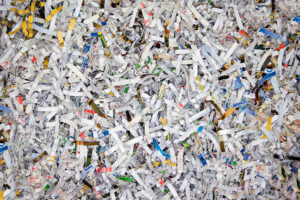Over 5 million tons of medical waste is produced every year in America. For both large and small generators, there are legal, health, and environmental reasons to make sure you collect, store, and dispose of this waste properly.
Enterprises that work with biomaterial are the primary producers of medical waste. Types of these businesses include:
- Medical Clinics
- Dental Clinics
- Pharmaceutical Companies
- Hospitals and Medical Centers
- Veterinary Clinics
- Tattoo Parlors
- Body Art Parlors
- Salons
There are onsite accumulation requirements that the federal Environmental Protection Agency (EPA) has set for those storing medical waste onsite. Please be aware that the requirements listed in this post are set by the EPA and do not include additional state or local requirements.
The regulations regarding accumulation limits depend on what class of medical waste generator you are.
Types of Generators
The EPA set classifications on types of medical waste generators.
There are two main classes:
- Small Quantity Generators (SQGs): Produce between 100 – 1,000 kilograms monthly.</li?
- Large Quantity Generators (LQGs): Produce over 1,000 kilograms monthly.
For more information on medical waste generators, see our post Large Quantity Generators vs. Small Quantity Generators.
Onsite Accumulation Limits
The EPA has set forth volume and time limits on medical waste generators depending on their generator classification.
Volume Limits
SQGs – Permitted to store less than or equal to 6,000 kilograms of
medical waste onsite.
LQGs – There is no set limit.
Accumulation Limits
SQGs – Permitted to store medical waste less than or equal to 180 days or, if waste is transported more than 200 miles, they can store less than or equal to 270 days.
LQGs – Permitted to store medical waste less than or equal to 90
days.
Accumulation Container Requirements
Medical waste stored at the site of generation (doctor’s offices, veterinary clinics, etc.) must be stored in approved containers. Container requirements for SQGs and LQGs are mostly the same and require:
-
- Solid, non-leaking containers that can safely be closed with a lid
- Hazardous Waste labeling that includes information on the accumulation start date for that container (i.e., when the first medical waste item was placed in the container)
-
- Department of Transportation requirements
- The OSHA Hazard Communication Standard (29 CFR 1910.1200)
- The NFPA code 704 labeling requirements
- Weekly inspections of containers and storage area
- Clear space around all containersAn indication of the type of hazard the contents pose, which can be achieved by complying with one of the following labeling requirements










